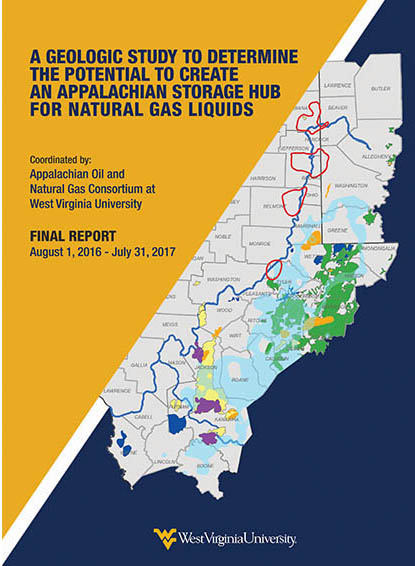 It is no secret that the region around West Virginia, Pennsylvania and Ohio has abundant natural gas resources, but can the three states uncover the keys to turning those resources into economic growth? West Virginia University-led research may have some of the answers.
It is no secret that the region around West Virginia, Pennsylvania and Ohio has abundant natural gas resources, but can the three states uncover the keys to turning those resources into economic growth? West Virginia University-led research may have some of the answers.
On August 29, WVU is releasing to the public a study that shows how the region can support storage facilities that are critical for attracting petrochemical and related industries to the area. Researchers will present the data at a technical workshop in Canonsburg, Pennsylvania, hosted by the Eastern Petroleum Technology Transfer Council, PTTC, at WVU.
“Appalachia is poised for a renaissance of the petrochemical industry due to the availability of natural gas liquids,” said Brian Anderson, director of the WVU Energy Institute. “A critical path for this rebirth is through the development of infrastructure to support the industry. The Appalachian Storage Hub study is a first step for realizing that necessary infrastructure.”
Led by Doug Patchen, director of the WVU Appalachian Oil and Natural Gas Consortium and the Eastern PTTC, researchers from the geological surveys in West Virginia, Pennsylvania and Ohio studied geologic formations that could offer suitable locations for developers to build underground facilities to store natural gas liquids from Marcellus and Utica wells.
The team identified and mapped all potential options for subsurface storage of natural gas liquids along the Ohio River from southwestern Pennsylvania to eastern Kentucky, and the Kanawha River in West Virginia. The researchers focused on three options for subsurface storage.
One option includes areas where the Salina F Salt is at least 100 feet thick and suitable for solution mining, a type of mining that uses a liquid such as water injected through a borehole to dissolve and extract salts and minerals.
Another option includes areas where the Greenbrier Limestone is present 1,800 to 2,000 feet below the surface and is at least 40 feet thick.
Converting existing sandstone reservoirs in depleted gas fields and inactive gas storage fields to natural gas liquids storage is the third option.
Previously, the consortium had conducted studies of the Marcellus and Utica shale gas plays. Results from those studies have been used by both small producers such as Northeast Natural Energy and large multinationals such as Exxon and have helped fuel the region’s shale gas boom.
This latest work was conducted as part of the Tri-State Shale Coalition, an innovative cross-border collaboration among Ohio, Pennsylvania and West Virginia and a critical key for unlocking the region’s economic opportunity, according to its members.
The Coalition was created following a collaborative agreement signed in October 2015 by Governors’ offices in West Virginia, Pennsylvania, and Ohio. Charter members include the Benedum Foundation, a charitable organization, and Team NEO, the Allegheny Conference on Community Development and Vision Shared, all non-profit economic development organizations in Ohio, Pennsylvania, and West Virginia.
A public-private partnership, the coalition brings together workforce development organizations, academic institutions such as WVU, and economic development groups to strategically advance the area as a “super-region” for petrochemical, plastics fabrication and advanced manufacturing jobs and investments.
“Recognition of the enormous opportunity for economic development based upon shale gas, including downstream modern manufacturing, was the motivation for the Governors of West Virginia, Ohio, and Pennsylvania to agree to collaborate to maximize the opportunity,” said William Getty, Benedum Foundation president.
The WVU Energy Institute secured $100,000 from the Benedum Foundation to support the study. That amount was matched by a total of $100,000 more from AEP, Antero, Blue Racer, Charleston Area Alliance, Chevron, Dominion, EQT, First Energy/Team NEO, Mountaineer NGL Storage LLC, Noble Energy, Southwestern Energy, XTO Energy and the West Virginia Oil and Natural Gas Association.